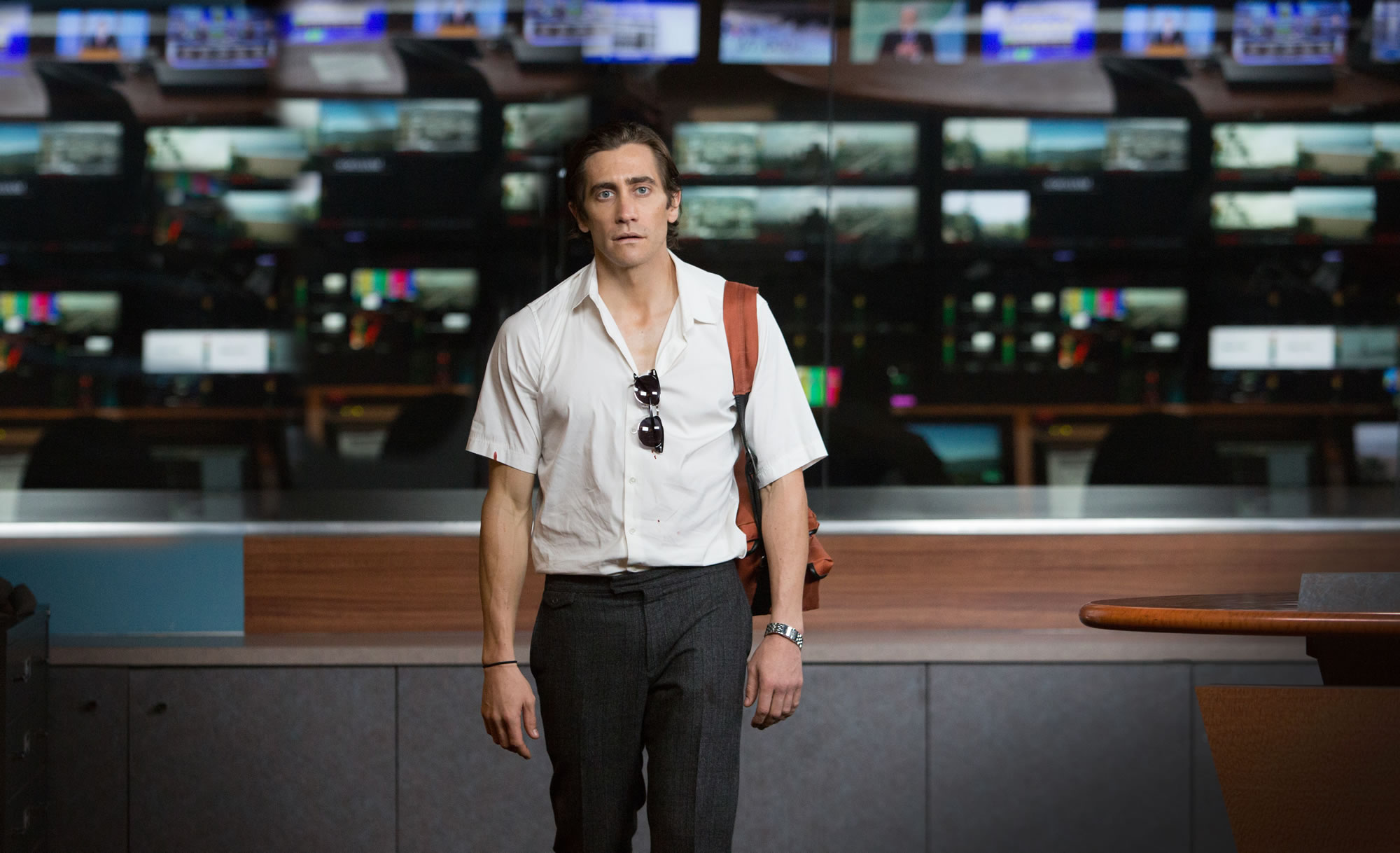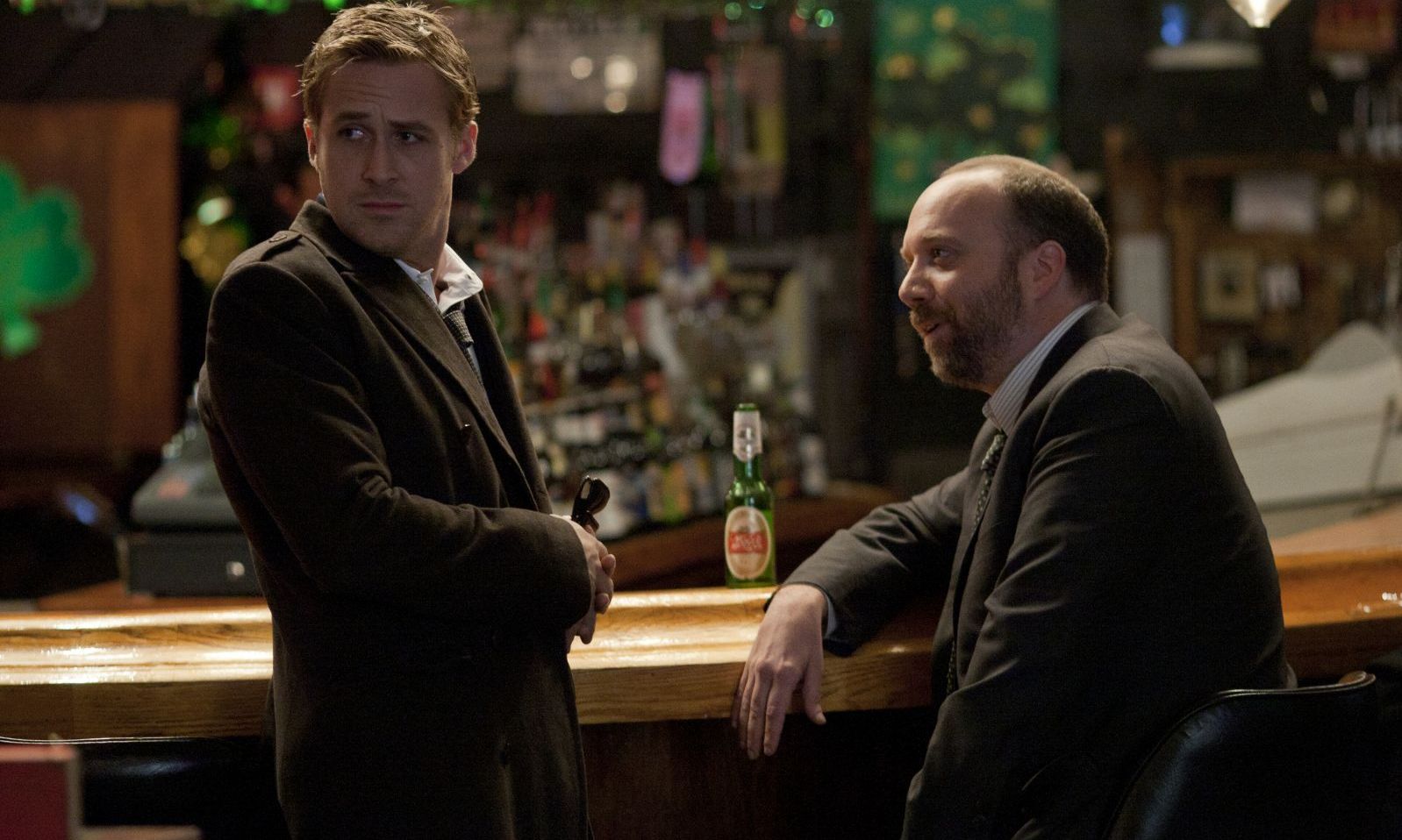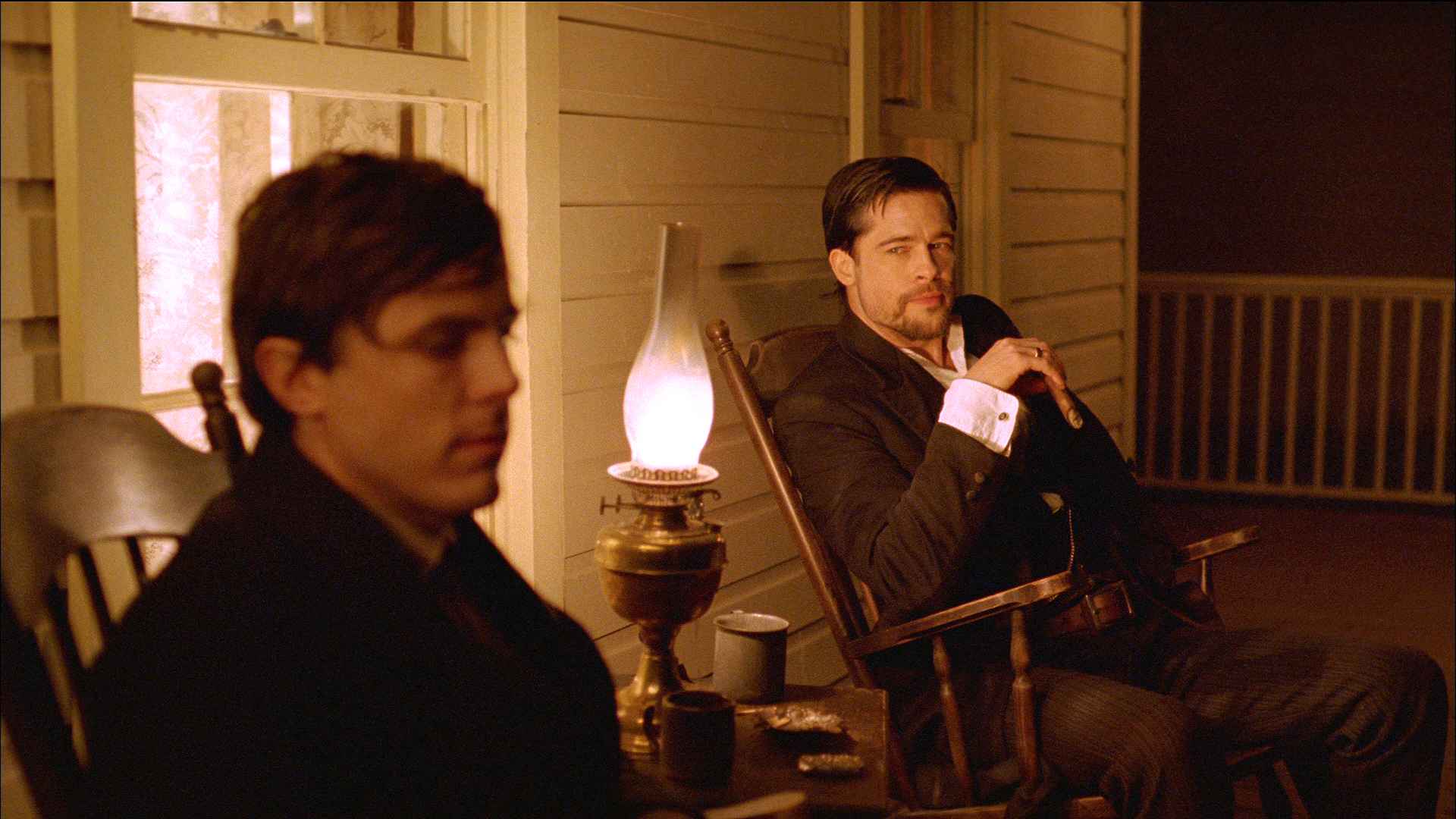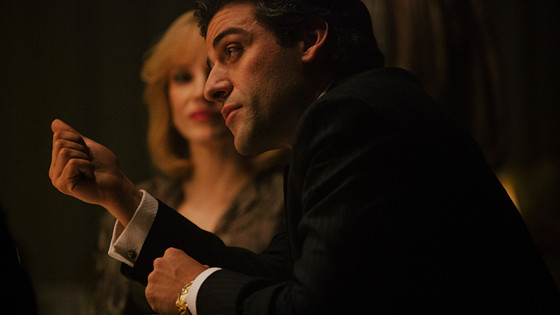11. Nightcrawler (2014, Dir. Dan Gilroy)

With Nightcrawler, writer/director Dan Gilroy is remixing one of the 1970s’ most iconic films, Taxi Driver, for the 21st century. This film is as modern as it gets, with its cynical criticism of a society addicted to violent images, but the basic story is the same as Scorsese’s classic – an isolated loner seeks connection with others, in a harsh and unsentimental urban landscape.
Travis Bickle’s descendant is Lou Bloom (Jake Gyllenhaal), who sees an opportunity to make a name for himself as a Nightcrawler, shooting footage of car wrecks, robberies, and murders for the local news. As Lou drives his car through the streets of Los Angeles at night, shots out the windows of people, lost souls on the streets of LA, are framed nearly identically to Scorsese’s conception of Travis’s cab, which is his prison of loneliness.
In Taxi Driver, the cab and Travis’s identity as a cab driver are what give him notoriety after his violent attack on the criminals. The same is true for Nightcrawler’s Lou, whose cars begin as the vehicle for his actions – a salvage thief at the film’s opening, and then the video footage vulture of the main action – and then his eventual actualization.
In some ways, though, Nightcrawler adopts the ending of Taxi Driver’s close cousin, Scorsese’s The King of Comedy (1983), in which (depending on the audience’s interpretation), the anti-hero is rewarded for his anti-social behavior in a scathing critique of the American Dream and those who will do anything to achieve their interpretation of it.
Nightcrawler hits a similar note. On the DVD commentary, Gilroy recounts a meeting with Gyllenhaal before the actor signed onto the role in which the director says, in response to a question about how he saw the film, ‘As a success story.’ While the films of the 1970s are often known for their bleak endings, in which individuals are crushed by the institutions they are a part of, another, more cynical approach was often used as well – the status quo (horrible as it may be) rewards those who play within its rules.
12. The Ides of March (2011, Dir. George Clooney)

It’s no coincidence that Clooney appears on this list more than once. His directorial effort about politics is a mashup of the actor’s own growing cynicism about the modern political system and the 1970s ethos of films like 1972’s The Candidate. His candidate Mike Morris contains shades of 2008’s Candidate Obama, in his willingness to break political convention, despite taking some license with just how much a candidate could really get away with saying.
However, the script by pre-House of Cards Beau Willimon revels in conspiracy – meetings are hushed, cast over with the dim glow of the parking garage in All The President’s Men where a half-lit Deep Throat tells Redford’s Bob Woodward to ‘Follow the money.’
Clooney also creates an echo with another political classic of the 1970s, Robert Altman’s Nashville, choosing to frame the silhouette of Ryan Gosling’s cynical message man against a massive American flag, simultaneously undermining the hollowness of such flagrant displays of patriotism and acknowledging the darkness beneath the business of politics.
Gosling’s Stephen Meyers starts out a craven political operator, openly mocking Morris’s stump speech in the first moments of the film as debate prep, and descends deeper into the mud as the film goes on, ending much where he began, but having compromised what remained of his principles.
As the film’s final shot (Stephen looking directly into the camera) cuts to black, it achieves the peak of its cynical worldview – it is Stephen, who outmaneuvers, lies, cheats, and transgresses his way to the top, consequences be damned. In true 1970s fashion, he gets exactly what he wants, but what he wants is morally dubious.
13. Inherent Vice (2014, Dir. Paul Thomas Anderson)

Set in the early 1970s, in the midst of the free love movement (much to the chagrin of Josh Brolin’s ‘Bigfoot’ Bjornsen), this film follows ambling, stoner private eye Larry ‘Doc’ Sportello, who is on the case of a missing real estate developer and a mysterious organization known as the Golden Fang.
Based on the novel by Thomas Pynchon, this film evokes the 1970s not only in the setting of its story, but in the playground it provides for writer/director Paul Thomas Anderson to indulge in references to his favorite filmmaker, celebrated heavily in the decade, Robert Altman.
The fundamental exercise at work in Inherent Vice is the playfulness the film exhibits with the conventions detective genre. Coincidences are a little too convenient – every character seems to know each other, a discussion of one player leads to Doc pulling a photograph of that individual off the wall – in a way that emphasizes the tendencies of the detective story to lean heavily on narrative harmony.
Anderson’s Altman love comes through strongest in his visual references to The Long Goodbye (1973), Altman’s own send-up of the literature of Raymond Chandler and his most famous creation, Philip Marlowe.
Altman’s primary goal as a filmmaker, especially in the 1970s, was the undermining of genre conventions, and Anderson uses the Pynchon source material (already comfortably poking at the detective story) to infuse his film with a heavy dose of Altmania.
The tossed off visual reference, at a rock and roll mansion party, to The Last Supper isn’t so much a quote of the actual Da Vinci masterwork, but a quote of Altman’s mockery of the painting in MASH (1970). Talk about layers – that’s enough convoluted angles to make Doc reach for a bud.
14. The Assassination of Jesse James by the Coward Robert Ford (2007, Dir. Andrew Dominik)

There’s a moment near the end of this film that emphasizes the west as Dominik sees it, which is a close cousin to Robert Altman’s anti-western, McCabe & Mrs. Miller (1972). In Jesse James, the titular coward Robert Ford gets into a confrontation with a wandering minstrel, and drunkenly slips and falls on the floor of a saloon.
When he gets up, his black suit is covered in mud. In Dominik’s (and Altman’s) conception of the west, the grime isn’t confined to the muddy streets outside the saloons and other iconic western locations. It stains the characters wherever they go, much like the mythic reputation that follows Jesse, and the dubious one attached to Ford.
The characters are routinely shot by lantern light, where the background completely disappears, and the actors’ faces fill the frame, the flickering flames casting them in an orange glow. The film’s crowning visual achievement comes early, as the nighttime robbery of a train is filmed nearly entirely in silhouette. The lanterns held by the James gang cast the same soft orange glow, but they’re contrasted with the overpowering, blinding white light of the train as it approaches.
It’s in this sequence that Dominik and Roger Deakins (the film’s sterling cinematographer) tell the story in the smallest details – Jesse bending down to the tracks anticipating the train’s approach, and the rocks around the metal rail beginning to crumble, or the train’s headlight cascading through the narrow trees.
For the remainder of the film, Dominik consistently creates frames that echo the pair of 1970s films of Terence Malick, Badlands (1973) and Days of Heaven (1978), each of which is as much about its outlaw characters as the landscape they inhabit.
Many shots in Jesse James work to emphasize the place of the characters in the story in relationship to their surroundings: shots of men on horses riding through a wide and desolate landscape, and an advancing group of lawmen trekking through snow to assault a farmhouse, their black suits clashing with the endless white of the field.
15. A Most Violent Year (2014, Dir. J.C. Chandor)

In addition to sharing the general setting of many iconic films from the long 1970s decade, Chandor’s A Most Violent Year also embraces the criminal environment that drove many of the films of that era.
His protagonist, Abel Morales, played brilliantly by Oscar Isaac, is something of a calm in a storm. His business, shipping and selling heating oil, is rife with corruption, and he spends the majority of the film getting to the bottom of a mystery – just who is stealing his trucks and selling the heating oil for their own profit. Compounding his trouble is that Abel is on the precipice of purchasing a new oil storage facility that will allow him to grow his business.
The film drew many comparisons to Sidney Lumet’s films of the 1970s – Serpico, Dog Day Afternoon, and Network – which shape the identity of the decade in their cynical sensibility towards institutions.
In A Most Violent Year, the institution is the economic system itself, which rewards Abel’s initiative (leavened with cold, calculating ruthlessness) but punishes the vulnerability of Julian, one of Abel’s drivers who is robbed not once, but twice (in echoes of a similar supporting character’s journey in 1979’s And Justice For All).
At the center of the morality tale is Isaac’s performance as Abel, recalling the look of Al Pacino, and the similar energy that Isaac most seems to harness in the role, with the barely controlled fury that he has learned to keep inside working as a key similarity between Abel and Michael Corleone.
The Godfather acts as another point of comparison to the film’s look. Light is visible, on the edges of the frame, and nearly always from behind the characters, whether they’re outside the mighty storage containers of Abel’s new facility, or inside his office, with light shining through the windows, yet never seems to brighten the room.
With the film’s location shooting bringing the grittiness of New York City to life, and a car/foot chase that recalls the largest and most famous set piece from William Friedkin’s The French Connection (elevated train car and all), Chandor’s work is supremely of a piece with those earlier films which it echoes.
Author Bio: Brian Brems is an assistant professor of English and Film at the College of DuPage, a two-year institution in the western Chicago suburbs. He has a Master’s in English (Film & Literature) from Northern Illinois University. He also serves as the Director of Development for the Limelight Theatre Company, where he writes, directs, and teaches writing classes.